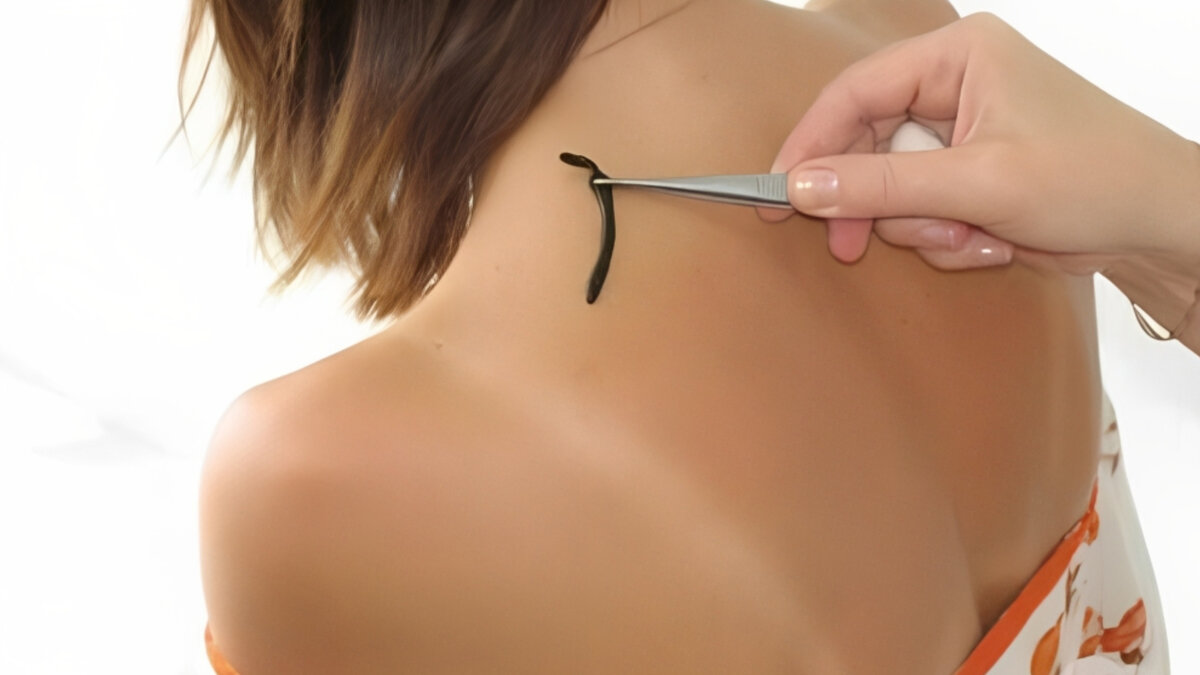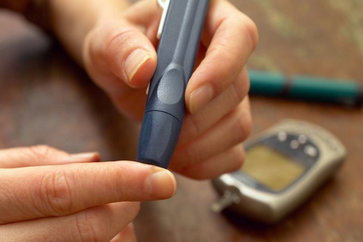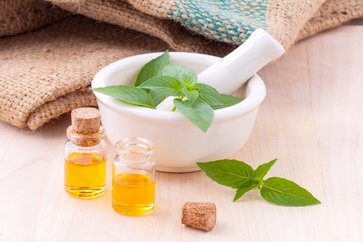Raktamokshana: An Ancient Ayurveda Treatment for Blood Cleansing
Raktamokshana is an ancient Ayurvedic practice aimed at purifying the blood and eliminating toxins from the body. Derived from two Sanskrit words – “rakta” (blood) and “mokshana” (to release or purify), Raktamokshana is one of the Panchakarma therapies, which are considered to be highly effective in promoting overall health and well-being.
This article explores the history, benefits, and procedure of Raktamokshana, shedding light on this traditional therapeutic practice.
Understanding Raktamokshana
Raktamokshana is based on the principle of balancing the three doshas – Vata, Pitta, and Kapha – in the body. According to Ayurveda, an imbalance in these doshas can lead to various health issues, including blood disorders, skin conditions, and joint problems.
Raktamokshana aims to remove excess Pitta and heat from the blood, thereby restoring the doshic balance and promoting better health.
History and Origins
The practice of Raktamokshana dates back thousands of years and finds its roots in ancient Indian scriptures and Ayurvedic texts. It was traditionally performed using techniques like jaloukavacharana (leech therapy) and prachchhana (venesection).
Over time, the therapy has evolved, and modern medical practices have been integrated into the procedure to enhance its effectiveness and safety.
The Science behind Raktamokshana
Raktamokshana operates on the principle that impure blood can lead to various ailments and diseases. By removing the vitiated blood, the body gets an opportunity to replenish itself with fresh, healthy blood.
Moreover, the procedure also stimulates the immune system and enhances blood circulation, which aids in the body’s natural healing processes.
Types of Raktamokshana
Raktamokshana, the ancient Ayurvedic practice of blood purification, encompasses several types of therapies, each catering to specific health conditions. These types include:
1. Siravedha: This method involves using a needle to extract small amounts of blood from the affected area or a specific vein. It is commonly employed to address localized issues and imbalances.
2. Prachchhana: Also known as venesection, Prachchhana involves deliberately drawing a larger amount of blood from a vein to eliminate toxins and impurities from the body.
3. Jaloukavacharana: This type of Raktamokshana employs the use of medical leeches to draw out blood, which aids in bloodletting and improves circulation.
4. Alabu: Alabu is a localized form of Raktamokshana, where a suction cup is applied to draw out impure blood from a specific area, promoting healing and relief.
Note: Each type of Raktamokshana offers unique benefits and is selected based on the individual’s health condition and doshic imbalance.
These therapies have stood the test of time and continue to be valued for their contribution to overall well-being in the realm of Ayurvedic medicine.
Indications for Raktamokshana
Raktamokshana is recommended for various conditions, including:
Blood Disorders
Raktamokshana therapy has shown effectiveness in managing various blood disorders, including hemochromatosis, polycythemia, and varicose veins. Through its blood-purifying properties, this traditional Ayurvedic practice offers potential relief and support for those dealing with these conditions.
Skin Conditions
Raktamokshana holds the potential to address common skin problems such as acne, eczema, and psoriasis by purifying the blood and alleviating excess Pitta dosha. This Ayurvedic therapy’s holistic approach aims to bring relief and balance to individuals suffering from these skin conditions, promoting healthier and clearer skin.
Joint Problems
Raktamokshana has been known to offer relief for joint problems, including conditions like gout and arthritis. By effectively reducing inflammation and alleviating pain, this traditional Ayurvedic therapy contributes to enhanced joint mobility and improved overall comfort for individuals dealing with these issues.
Digestive Disorders
Raktamokshana, through its blood-purifying effects, can play a beneficial role in managing digestive disorders such as hyperacidity and indigestion. By eliminating toxins from the bloodstream, this traditional Ayurvedic therapy helps promote a balanced digestive system, potentially leading to improved gastrointestinal health and reduced discomfort.
Raktamokshana Procedure
The procedure involves several steps:
Pre-Procedure Preparations
Prior to undergoing Raktamokshana, the patient’s doshic imbalance and overall health condition are thoroughly assessed. This careful evaluation helps the practitioner determine the most appropriate and beneficial method of Raktamokshana for the individual.
The Actual Procedure
Once the appropriate Raktamokshana technique has been selected based on the patient’s evaluation, skilled and trained practitioners perform the procedure in a sterile and hygienic environment. This ensures a safe and effective therapy session for the individual.
Post-Procedure Care
Following Raktamokshana, the patient receives personalized dietary and lifestyle recommendations to support proper healing and recovery. These guidelines are crucial for optimizing the benefits of the therapy and ensuring a smooth and successful post-treatment period.
Note: It’s important to note that Raktamokshana should be performed by experienced Ayurvedic practitioners who can assess the individual’s health condition and recommend the most suitable method for the best possible outcomes. As with any medical procedure, consulting a qualified practitioner is crucial to ensure safe and effective results.
Benefits of Raktamokshana
Raktamokshana, the Ayurvedic practice of blood purification, provides numerous advantages to overall health and well-being. Some of the key benefits include:
1. Improved Blood Circulation
By eliminating impurities and toxins from the bloodstream, Raktamokshana enhances blood flow and ensures better distribution of nutrients and oxygen throughout the body. This improved circulation contributes to the optimal functioning of various organs and systems.
2. Enhanced Immune System
Raktamokshana’s blood purification process contributes to a strengthened immune system. By cleansing and revitalizing the blood supply, the body becomes more resilient to infections and diseases, promoting overall health and well-being.
3. Relief from Certain Skin Conditions
Raktamokshana has the potential to provide relief to individuals dealing with skin conditions such as acne, eczema, and psoriasis. Through its blood-purifying properties and ability to reduce Pitta dosha, this Ayurvedic therapy addresses the root causes of these skin issues, offering potential improvement and alleviation of symptoms.
4. Alleviation of Joint Pain and Inflammation
Raktamokshana can be beneficial for individuals suffering from conditions like gout and arthritis. Through its ability to reduce inflammation and alleviate pain, this Ayurvedic therapy promotes improved joint mobility and overall joint health, providing relief to those dealing with joint-related discomfort.
5. Better Digestion and Metabolism
Raktamokshana’s blood purification process has a positive impact on the digestive system. By aiding in the management of issues such as hyperacidity and indigestion, this Ayurvedic therapy promotes better digestion and metabolism, contributing to overall improved gastrointestinal health.
6. Detoxification of Body
Raktamokshana plays a vital role in detoxifying the body by effectively removing impurities and toxins from the bloodstream. This purification process is instrumental in maintaining the body’s natural balance and supports the optimal functioning of various bodily processes.
7. Improve Skin Health
Raktamokshana’s ability to eliminate toxins from the blood can significantly improve skin health. This Ayurvedic therapy is known to reduce acne breakouts, enhance skin texture, and bring a natural glow to the complexion, contributing to clearer and healthier-looking skin.
8. Helps in Weight Loss Management
Raktamokshana’s positive impact on blood circulation and metabolism can be beneficial for weight management. By promoting improved circulation and metabolism, this Ayurvedic therapy can support efforts to achieve a healthy weight when combined with a balanced diet and regular exercise, contributing to overall weight loss management.
9. Pain Relief
Raktamokshana can provide relief for individuals dealing with chronic pain, especially joint pain and inflammation. Through the removal of inflammatory substances from the blood, this Ayurvedic therapy helps reduce pain and discomfort, offering potential relief and improved well-being.
10. Stress Reduction
Raktamokshana can have a calming effect on the mind and nervous system. By reducing toxin levels in the blood, this Ayurvedic therapy contributes to decreased stress and anxiety, promoting overall mental well-being and a sense of relaxation.
11. Improved Liver Function
Raktamokshana can have a positive impact on liver function as the liver plays a crucial role in detoxification. By supporting and enhancing liver function, this Ayurvedic therapy enables the organ to efficiently process toxins and waste products, contributing to overall liver health and well-being.
12. Enhanced Blood Quality
Raktamokshana plays a significant role in improving blood quality by eliminating vitiated blood. This purification process enhances nutrient absorption and efficient distribution throughout the body, contributing to overall better health and vitality.
13. Boosted Energy Levels
Raktamokshana results in a cleaner and healthier bloodstream, leading to increased vitality and higher energy levels. This Ayurvedic therapy promotes a sense of overall rejuvenation, allowing individuals to experience enhanced energy and improved well-being.
14. Balanced Hormones
Raktamokshana can play a role in balancing hormones within the body. Through its ability to reduce excess heat (Pitta dosha), this Ayurvedic therapy promotes hormonal equilibrium, contributing to overall hormonal balance and well-being.
15. Holistic Healing
Raktamokshana is a comprehensive and holistic approach to healing that goes beyond merely managing symptoms. This Ayurvedic therapy focuses on addressing the root causes of various ailments, promoting harmony and balance within the body, mind, and spirit. By considering the interconnectedness of all aspects of health, Raktamokshana aims to support overall well-being and true healing.
Contraindications and Risks
While Raktamokshana is generally safe and effective, there are some contraindications and risks to be aware of. The therapy may not be suitable for pregnant women, those with severe anemia, or individuals with bleeding disorders. It’s essential to consult a qualified Ayurvedic practitioner before undergoing the procedure.
FAQs on Raktamokshana
1. Is Raktamokshana painful?
Raktamokshana is a minimally invasive procedure and is usually not painful. Some individuals may experience slight discomfort during the therapy.
2. How long does the procedure take?
The duration of Raktamokshana can vary depending on the chosen technique and the individual’s condition. On average, it may take 30 minutes to an hour.
3. Are there any side effects of Raktamokshana?
When performed by a qualified practitioner, Raktamokshana is considered safe. However, some individuals may experience mild bruising or redness at the site of bloodletting.
4. Can Raktamokshana be performed on children?
Raktamokshana is generally not recommended for children. It is more suitable for adults and older individuals with specific health conditions.
5. Is Raktamokshana a permanent solution for blood disorders?
Raktamokshana can provide significant relief for certain blood disorders, but its effects may vary from person to person. It is essential to follow a healthy lifestyle and diet to maintain the benefits of the therapy.
Raktamokshana, an ancient Ayurvedic practice, provides a holistic approach to blood purification and overall well-being. By targeting the root cause of various health issues, this traditional therapy continues to be relevant in the modern world.
References:
- Role of Raktamokshana by Jalaukavacharana and Siravedhana in the management of Vicharchika (Eczema)(1)
- Role of Raktamokshana by Ghati Yantra in treatment of Gridhrasi (sciatica): A pilot study(2)
- Raktamokshana: An Ancient Ayurvedic Parasurgical Practice and Its Applicability in Contemporary Clinical Practice: A Review(3)
- Raktamokshana – A Systemic Review(4)

























